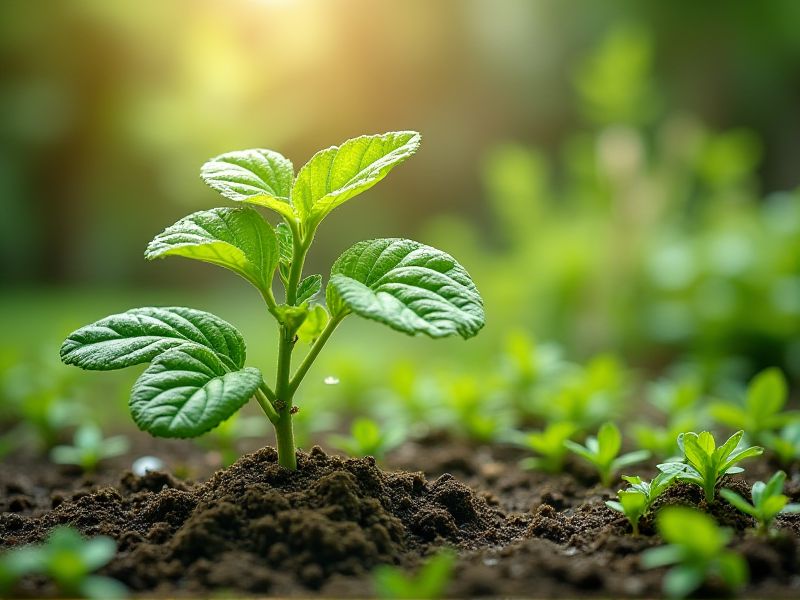
Drought-tolerant plants such as succulents, agaves, and lavender thrive in arid environments, making them ideal choices for water-wise gardening. By incorporating these low-maintenance species, you can significantly reduce water consumption while maintaining a vibrant landscape. Furthermore, plants like rosemary and sage not only require minimal irrigation but also offer culinary benefits and attract pollinators to your garden. Utilizing native plants suited to your local climate enhances biodiversity and supports the ecosystem. By prioritizing water-wise varieties, you can create an eco-friendly garden that conserves resources and beautifies your outdoor space.
List of some Water-wise plants that save resources
- Lavender (Lavandula)
- Agave (Agave americana)
- Yucca (Yucca filamentosa)
- Sedum (Sedum spp.)
- Russian Sage (Perovskia atriplicifolia)
- Rosemary (Salvia rosmarinus)
- Coneflower (Echinacea purpurea)
- California Poppy (Eschscholzia californica)
- Red Valerian (Centranthus ruber)
- Ice Plant (Delosperma cooperi)
Important things about Water-wise plants that save resources
Drought Tolerance
Water-wise plants are essential for cultivating gardens that thrive in drought-prone areas while conserving precious water resources. Species such as succulents, native grasses, and Mediterranean herbs exhibit natural drought resistance, requiring minimal irrigation and maintenance. By selecting these resilient plants, you not only contribute to sustainable landscaping but also reduce the overall demand on local water supplies. Integrating water-efficient gardening practices helps create an eco-friendly environment that benefits both your garden's health and the surrounding ecosystem.
Low Water Requirements
Water-wise plants are specifically designed to thrive with minimal water, making them ideal for drought-prone regions. Succulents, like agave and aloe, store moisture in their leaves, while native grasses require less irrigation due to their deep root systems. By incorporating these plants into your garden, you not only conserve water but also promote biodiversity and support local ecosystems. Prioritizing these drought-tolerant species can significantly reduce your environmental footprint and lower maintenance costs.
Native Species Benefits
Water-wise plants, particularly native species, greatly contribute to sustainable gardening and landscaping by utilizing less water while thriving in local conditions. These plants are adapted to regional climates, which means they require minimal irrigation after establishment, significantly reducing water consumption and conserving resources. By incorporating native flora into your garden, you support local ecosystems, providing habitats for wildlife and promoting biodiversity. Embracing these resilient plants not only enhances your outdoor space but also aligns with environmentally friendly practices that protect vital water resources.
Soil Moisture Retention
Water-wise plants, such as succulents and native perennials, play a crucial role in enhancing soil moisture retention by minimizing evaporation and maximizing water absorption. These hardy species have adapted to thrive in arid conditions, developing specialized root systems that capture and hold moisture effectively. By incorporating such plants into your garden, you can create a more sustainable landscape that requires significantly less irrigation. Choosing these drought-resistant varieties not only conserves water resources but also promotes healthier soil ecosystem, fostering biodiversity and resilience against climate fluctuations.
Climate Adaptability
Water-wise plants are essential for conserving resources in regions facing climate variability. These resilient species, such as succulents and native drought-resistant perennials, require minimal irrigation once established, significantly reducing water usage. Incorporating such plants into your landscape not only promotes sustainability but also enhances biodiversity by supporting local ecosystems. By selecting water-wise plants, you contribute to a more environmentally friendly garden that thrives despite changing climatic conditions.
Reduced Maintenance Needs
Water-wise plants are specifically cultivated to thrive in arid conditions, significantly reducing the need for frequent watering and extensive maintenance. Incorporating these drought-tolerant species into your landscape can lead to substantial savings on water bills and contribute to resource conservation. Native plants, such as succulents and desert wildflowers, not only require minimal irrigation but also support local wildlife, enhancing biodiversity. By selecting water-wise options, you create a sustainable garden that balances beauty and ecological responsibility while easing your maintenance efforts.
Pest Resistance
Water-wise plants, recognized for their drought tolerance and minimal resource requirements, can significantly enhance your garden's resilience against pests. Many of these plants possess natural defenses, such as aromatic oils and tougher foliage, which deter harmful insects and reduce the need for chemical pesticides. Native varieties, like California poppy or yarrow, not only thrive in arid conditions but also attract beneficial insects that promote a healthy ecosystem. By incorporating these resilient species, you can cultivate a low-maintenance garden that conserves water while minimizing pest issues.
Aesthetic Diversity
Water-wise plants, such as succulents and native drought-resistant species, are increasingly celebrated for their aesthetic diversity and resource-saving benefits. These plants not only thrive in low-water conditions but also offer a variety of colors, shapes, and textures, making them ideal for enhancing gardens and landscapes. Incorporating water-wise plants into your outdoor spaces can significantly reduce irrigation needs and decrease water bills, while still providing a lush and vibrant environment. By selecting these sustainable options, you contribute to the preservation of local ecosystems and promote biodiversity in your community.
Sustainable Landscaping
Water-wise plants, such as succulents, native grasses, and drought-tolerant perennials, are essential for sustainable landscaping, as they significantly reduce the need for irrigation. By incorporating these plants into your garden, you can conserve valuable water resources while still creating a thriving and visually appealing landscape. Additionally, these drought-resistant varieties often require less maintenance, minimizing the use of fertilizers and pesticides that can harm the environment. Choosing local species, which are adapted to your region's climate, ensures a more resilient garden that supports local biodiversity and ecology.
Long-Term Environmental Impact
Water-wise plants are essential for sustainable gardening, significantly reducing water consumption while promoting biodiversity. These drought-resistant species, such as succulents and native perennials, are specifically adapted to thrive in arid conditions, requiring minimal irrigation. By incorporating water-wise plants into your landscape, you contribute to soil conservation and decrease runoff, leading to improved water quality in your local ecosystem. Choosing these plants not only conserves vital resources but also enhances the natural beauty of your garden, creating a resilient environment for future generations.
